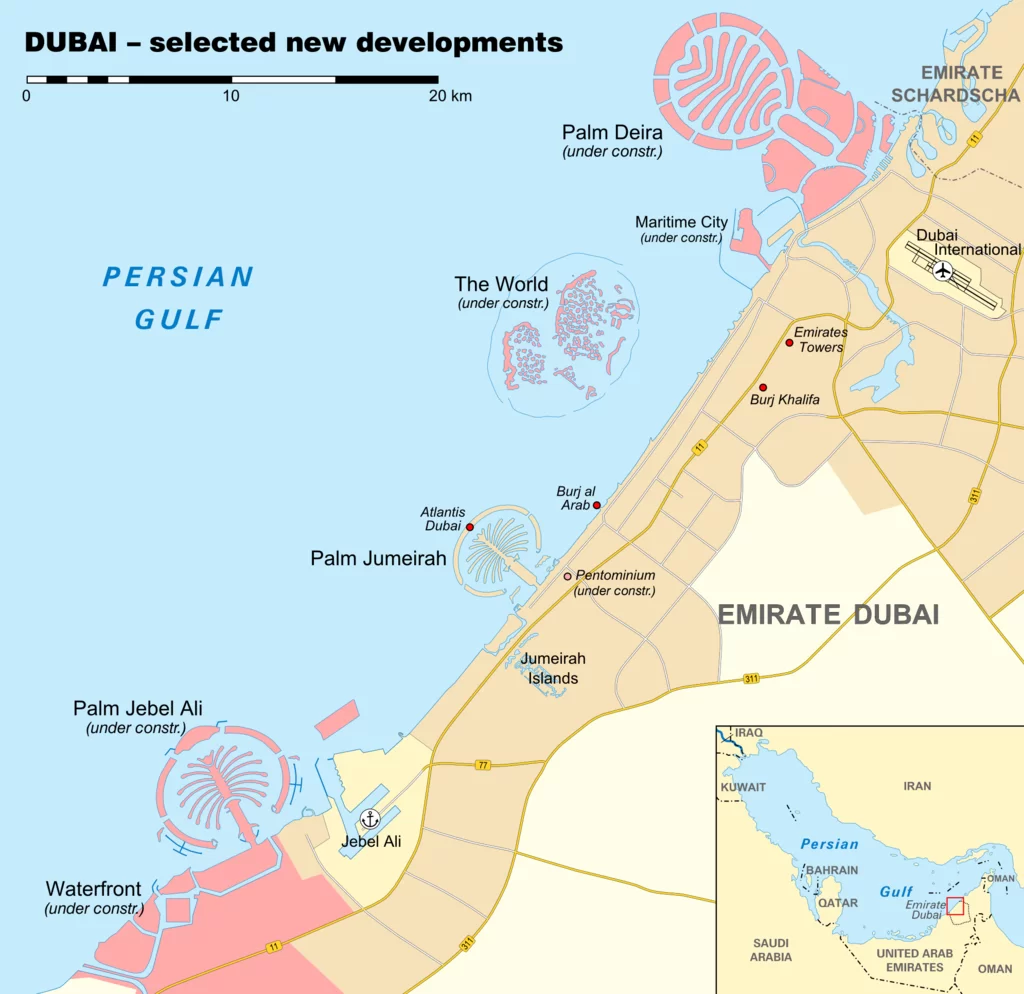From Singapore’s Marina Bay to the Dutch polders, these land reclamation efforts exemplify the peak of engineering innovation.
Urban development along coastal areas, particularly in Asia, is often facilitated by land reclamation efforts.
These might be relatively minor, such as the construction of an extended sea wall to fortify a coastline against erosion, or significant, such as the creation of entirely new island networks.
Here are five countries that have used land reclamation to expand their borders, counteract environmental effects, or improve community experiences.
Singapore
The island state of Singapore is severely limited in terms of land area; construction in a vertical direction – via the building of apartment blocks, for instance, which itself is a rip-roaring industry in the country – can only add so much extra living space.
Since the colonial era, the country has prided itself on using practical engineering to address challenges facing its population. A sea wall designed to combat high tides was constructed along the modern-day Boat Quay by the order of Sir Thomas Stamford Raffles in 1922.
A significant portion of space now occupied by Singapore Changi Airport in the country’s east was reclaimed, with 8.7 km2 of land, including two km2 of swamp, being cleared. Entire hills were levelled in areas such as Bedok and Siglap, and the earth shifted to the coastline; sand was also shipped in from abroad.
Marina Bay, known the world over for the architecture lining its unique skyline, was created – and the Singapore River rerouted – when huge swathes of land were reclaimed from the sea from the 1970s to the 1990s.
In all, land reclamation efforts added approximately 140 m2 of land in the 50-odd years following the country’s split from Malaysia in 1965, increasing the total land by 25 per cent.
And there are no signs of slowing down, with a new project mooted along the east coast in the coming decades.
Netherlands
When it comes to land reclamation, the Dutch did it first and arguably set the global standard; famously, the Netherlands is mostly below sea level.
The risk of inundation from the sea has prompted the Dutch to construct systems of polders and dikes which have helped to keep the nation dry.
This has been a centuries-long journey; a massive flood in the 1200s created the Zuiderzee, a 50 km-wide bay at which residents gradually pushed back over time.
Dubai
Speaking of the Dutch – they’ve also had a hand in constructing artificial archipelagos in the Persian Gulf.
Palm Jumeirah, part of the Palm Islands, was constructed by Dutch dredging company Royal Van Oord and cost US$12 billion; the project created a total of 5.6 km² of land. Multiple other developments are in the works.

In Palm Jumeirah, a 17 km-long, crescent-shaped island surrounds several smaller ‘fronds’ branching off from a central spine. Openings on either side of the crescent, which acts as a breakwater, are designed to circulate the water within the complex. Along the spine there’s a tunnel for vehicles and a monorail.
These palm-shaped developments aren’t the only instances of land reclamation with a quirky design. Witness the creation, back in 2014, of a 19,000 km2 area of parkland in Türkiye that features a surprise animalian guest:
Indonesia
It’s been common knowledge for a while that Jakarta is a city slowly sinking; flooding is a common yearly occurrence during monsoon season.
While construction has begun on a new capital city on a different island – itself a controversial project with deep environmental concerns – engineers in Jakarta have a plan to build a giant sea wall-turned-residential complex shaped like the country’s national symbol, the Garuda.
Recalling the evocative designs of the Palm Islands, Jakarta’s Great Sea Wall and Great Garuda would be constructed just off the northern coastline and include the creation of an island as large as 40 km2.
The project’s detractors point to the environmental impact, such as the impact on reef life and the possibility of stagnating water building up behind the sea wall.
Australia
With its already extensive landmass, Australia hasn’t necessarily needed to expand its coastline, but instances of land reclamation have used engineering and design for the benefit of the community.
Sydney’s revitalised Barangaroo precinct, which partly relies on reclaimed land, has been designed to fulfil parkland, entertainment, dining and residential purposes. Meanwhile in Perth, plans are ongoing to continue redeveloping the waterfront.
These projects show the potential for land reclamation to achieve recreational and aesthetic as well as practical purposes.